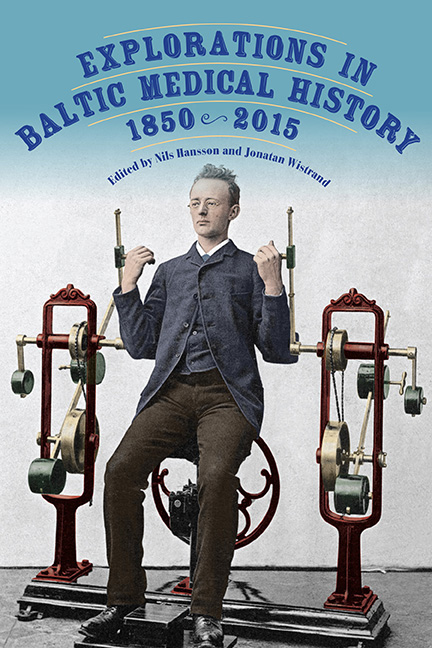8 - Sanatorium Narratives from the Baltic Sea Region and Early Signs of the Pathographical Genre: The Case of Harriet Löwenhjelm
Published online by Cambridge University Press: 17 April 2021
Summary
On the basis of my own experience, I shall never be able to understand, never manage to understand, that an otherwise cheerful and essentially untroubled person can be destroyed by consumption alone.
Franz Kafka to Hugo Bergmann, August 1923, Graal-Müritz by the Baltic SeaIn April 1914, the twenty-seven-year-old Swedish poet and painter Harriet Löwenhjelm arrived in Vejlefjord, Denmark, for her first stay at a large, modern, institutional sanatorium. In a letter addressed to her cousin, Marianne Mörner, she wrote enthusiastically, “I arrived in excellent weather … and was examined by three doctors, one more distinguished than the next. I seem very healthy, and I hope they will let me return home soon.”
Harriet Löwenhjelm's journey to the Baltic Sea coastline was—like Franz Kafka's nine years later—taken in hopes of finding a cure for her tuberculosis. Before too long, however, the initial enchantment had faded. In a letter from June 1914 to her friend Elsa Björkman, she enclosed a poem expressing, more than anything, a sense of despondency:
Come and help me for God's sake,
for my sake,
for your sake,
you alone can do it!
Sorrow fills the world with ache,
glittering gold is mostly fake.
For God's sake,
for my sake,
help, you who can do it!
Like many of her fellow patients, Harriet Löwenhjelm, with her artistic soul and obstinate manner, apparently found it difficult to adjust to life in the sanatorium. She would grow accustomed to the setting only gradually. But despite a four-year odyssey in which she traveled between the finest sanatoriums in Scandinavia, Harriet Löwenhjelm passed away in May 1918, at the age of thirty-one.
The aim of this chapter is twofold.
First, to illustrate that in the early twentieth century, in addition to a transfer of scientific opinions and medical observations, there was also an indisputable circulation of illness experiences across the national borders of the Baltic Sea region. One category of individuals seems to have been particularly active in this experience transfer: the itinerant tuberculosis patients at the sanatoriums.
Second, to contribute to the academic discourse concerning the emergence of pathography—that is, the emergence of the biographical subgenre centering on individual illness experiences.
- Type
- Chapter
- Information
- Explorations in Baltic Medical History, 1850–2015 , pp. 186 - 202Publisher: Boydell & BrewerPrint publication year: 2019

